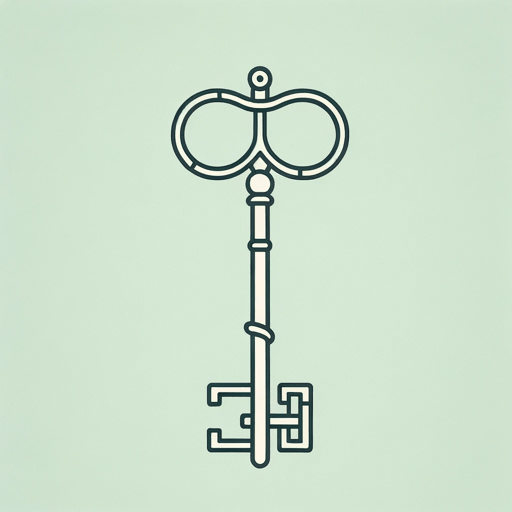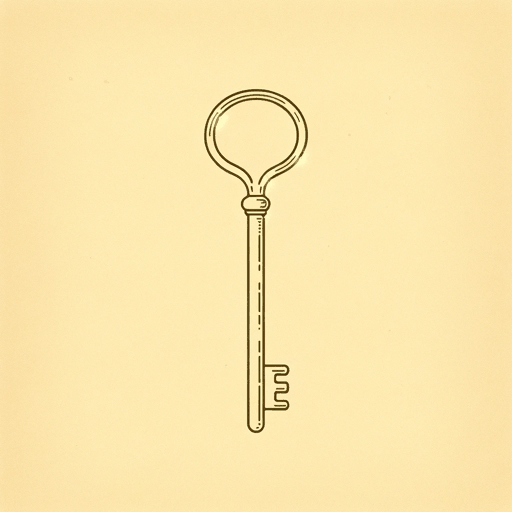55 pages • 1 hour read
Brian SelznickThe Invention of Hugo Cabret
Fiction | Novel | Middle Grade | Published in 2007A modern alternative to SparkNotes and CliffsNotes, SuperSummary offers high-quality Study Guides with detailed chapter summaries and analysis of major themes, characters, and more.
Summary and Study Guide
Overview
The Invention of Hugo Cabret (2007) is written and illustrated by Brian Selznick, author of Wonderstruck, The Marvels, and several other well-known novels. The Invention of Hugo Cabret is categorized as historical fiction, but it fits into multiple other genres as well. In an Amazon Exclusive letter, Selznick says his novel’s unique nature makes it “not exactly a novel, not quite a picture book, not really a graphic novel, or a flip book or a movie, but a combination of these things.” Selznick includes over 280 illustrations, which reflects the importance of drawings within the plot of the story. The Invention of Hugo Cabret has received numerous awards since its publication. The most noteworthy is the Caldecott Medal in 2008 for best picture book of the year. The novel has also received the Publisher’s Weekly Best Book of 2007, YALSA Best Book for Young Adults, Indies Choice Book Award for Children’s Literature, Quill Award for Children’s Chapter Book/Middle Grade, and the New York Times Best Illustrated Book of 2007. It was a National Book Award finalist in 2007 as well. In 2011, John Logan adapted the novel into the film Hugo, directed by Martin Scorsese.
The story is set during the 1930s in Paris, France. Most of the plot occurs in a train station where young Hugo Cabret works on the clocks and where Georges—secretly the famous filmmaker Georges Méliès—owns and operates a toy booth. Méliès was a famous filmmaker, so the book includes many references to his illustrations and films. The novel tells how Hugo overcomes his abandonment at the train station and follows Georges’s journey as he heals from the trauma of loss in his past.
Plot Summary
In a Paris train station, Hugo Cabret hides in a wall behind a clock face. He’s watching an older man named Georges—later revealed as Georges Méliès—arguing with Isabelle, Georges’s goddaughter. Hugo leaves his hiding place and creeps to the toy booth. As he reaches for a mechanical mouse, Georges grabs Hugo’s arm and demands he empty his pockets. Georges takes the trinkets and the battered notebook Hugo produces. When flipping through the notebook, Georges becomes angry and asks Hugo who made the drawings of an automaton. When Hugo refuses to answer, Georges lets him go, saying he will burn the notebook.
Later, Hugo returns as Georges closes his toy booth. Hugo asks for his notebook back, but Georges threatens to tell the Station Inspector if he ever sees Hugo again. Georges leaves the station, and Hugo follows him through the snow to a worn-down apartment building. When Georges goes inside, Hugo throws a rock at an apartment window. Isabelle appears and comes outside to talk to him. She promises to make sure Georges doesn’t burn the notebook.
The story flashes back to Hugo’s past. Before Hugo lived in the train station, his father owned a clock shop and tended the clocks at a museum part-time. While in the museum’s attic, he finds an automaton in disrepair. He takes Hugo to the museum to see it, and Hugo immediately becomes fascinated. Hugo’s father begins working on the automaton, making drawings in notebooks of its many parts and how they fit together. He gives Hugo one of these notebooks on his birthday. One night, Hugo’s father dies in a fire at the museum. Hugo’s uncle, Claude, comes to collect Hugo and takes him to live and work at the train station. Uncle Claude disappears, and Hugo becomes invisible to avoid arrest. One night, he decides to run away. Hugo finds himself at the museum’s wreckage and sees the automaton. He takes it back to the station, where he has now spent the past three months fixing it.
The next morning, present day, Georges hands Hugo a handkerchief full of ash. Hugo is upset but refuses to believe it’s his notebook. Hugo continues to ask Georges for his notebook, and Georges eventually hands him a broom, telling him to be helpful. He then gives Hugo the mechanical mouse Hugo initially tried to steal, which broke during their confrontation. He tells Hugo to fix it. Hugo does, and Georges tells him that if he wants his notebook back, he must work at the toy booth daily to work off his debt for stealing toys.
As instructed, Hugo goes to the toy booth every day after tending the clocks. Hugo meets Isabelle at the bookstore one day, and Isabelle introduces him to her friend Etienne. She tells Hugo that Etienne works at a theatre near her apartment and sneaks her into the movies because Georges won’t let her go. Etienne makes Hugo promise he’ll go to the theatre next week with Isabelle. Isabelle leaves the store, and Etienne gives Hugo a coin to buy a book about magic.
Though he is tired, Hugo works on the station’s clocks and at Georges’s booth during the day, then practices magic tricks and works on the automaton at night. He meets Isabelle at the theatre as promised, and when Etienne doesn’t show up, Isabelle picks the lock. After the movie ends, the theatre manager catches them and kicks them out. Hugo and Isabelle return to the station, where they see the Station Inspector. Hugo runs away, but when Isabelle tries to follow him, she bumps into someone and falls. Hugo runs back to her and helps her up; as he does so, he sees a heart-shaped key tied around her neck.
The next day, Georges angrily accuses Hugo of breaking into his apartment and stealing the notebook back. Isabelle arrives during the confrontation; she has brought the notebook, but she hides it, and doesn’t admit to being the one who stole it. Hugo runs up to her and hugs her, then flees. Hugo returns to his room and pulls out the automaton. He takes the heart-shaped key he stole from Isabelle when he hugged her and puts it in the machine’s back. Isabelle bursts into the room, demanding to know why he stole the key. When Hugo hesitates to turn the key, Isabelle does it for him. They watch as the automaton draws a picture of the man in the moon with a rocket in his eye, an image Hugo’s father said he’d seen when he went to the movies as a young boy.
In Part 2, Hugo and Isabelle watch as the automaton signs the picture with the name Georges Méliès: the same name as the toy booth owner and Isabelle’s godfather. Isabelle accuses Hugo of stealing the automaton, and the children fight over the picture, tearing it in half. Isabelle runs home to seek answers from her godmother, Jeanne; Hugo chases her, and Isabelle shuts his hand in the apartment door on accident. The commotion draws Jeanne’s attention, and the children show her both halves of the automaton’s picture. Jeanne asks where they got it; Hugo describes how he obtained the automaton and fixed it, and Isabelle confesses to stealing the key from Jeanne. Jeanne says they must never discuss this again, as she must protect her husband. The three characters hear Georges enter, and Jeanne tells the children to hide in the bedroom until she can sneak Hugo out of the apartment. Jeanne glances at the armoire as she leaves the room, so Hugo and Isabelle search inside. They discover hundreds of Georges’s drawings and a cape covered with moons and stars, but Isabelle falls and injures herself, and her scream draws Georges and Jeanne into the room. Georges becomes angry and begins ripping up the drawings. He then sits on the bed and cries while the children gather the pictures and lock them back in the armoire.
Hugo and Isabelle go to the kitchen while Jeanne puts Georges to bed. Jeanne joins them and tells Isabelle never to talk to Hugo again. Hugo returns to the station and hides the automaton. He realizes he won’t be able to tend the clocks due to his injured hand. He’s afraid this will cause the Station Inspector to discover he’s alone. The next morning, Hugo goes to the bookseller and asks for books about movies. The bookseller doesn’t have any, so he tells Hugo to try the Film Academy library. Hugo goes to the Film Academy, and Etienne helps him find a book that shows pictures of Georges’s films, proving he is the famous filmmaker George Méliès. Later, Isabelle visits Hugo, and he tells her what he discovered about Georges. Hugo finally tells Isabelle about his father’s death and his uncle’s disappearance.
The next day, Hugo runs Georges’s toy booth to help them earn enough money for medicine. After a week, they have made enough money. However, the station’s clocks are starting to break down because Hugo can’t care for them. Hugo then goes to Isabelle’s apartment, where Etienne and his teacher, René Tabard, want to meet Georges. Jeanne is afraid of how Georges will react, but when the group watches A Trip to the Moon, one of Georges’s films, he stands in the doorway and watches too. Isabelle tells her godfather about Hugo’s automaton and the drawing it produced. Georges then takes the movie projector into his room and locks the door. Isabelle picks the lock, and they find Georges surrounded by his drawings. He tells them about his rise and fall as a filmmaker and asks Hugo to bring him the automaton, which he originally built.
When Hugo returns to the station, he overhears a man and woman talking about the police finding the body of the station’s Timekeeper. The woman sees Hugo has taken a milk bottle, and the two chase Hugo, who escapes into the walls. As Hugo tries to carry the automaton out of his room, the Station Inspector bursts in, followed by the man and woman. Hugo drops the automaton when the Station Inspector grabs his arm, but Hugo manages to slip out of his grip. Hugo runs into the crowded station, but he bumps into someone, falls and gets caught by the man and woman. The Station Inspector takes him to his office and places him in a cell while he calls the police. When the officers arrive, Hugo escapes again into the station. He becomes disoriented and falls onto the tracks of an oncoming train. The Station Inspector grabs him at the last moment, and Hugo faints.
When Hugo wakes, he’s in the Station Inspector’s office, but Georges and Isabelle are there. Georges encourages Hugo to tell the Station Inspector about his experience living independently and then takes Hugo and Isabelle back to his apartment. Six months later, Hugo gets ready to go to a ceremony recognizing Georges’s achievements in filmmaking. The theatre shows the films Hugo, Isabelle, and Etienne were able to recover, one of which is A Trip to the Moon. Eventually, Hugo grows up and becomes a famous magician. He builds his own automaton, which writes Hugo’s story.


